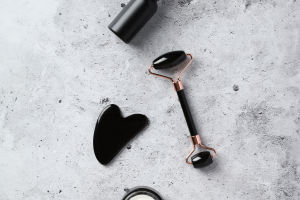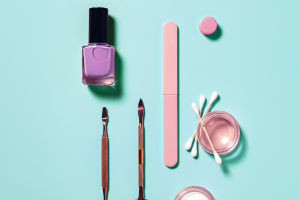Find Your Shade
Let's be honest—standing in front of a shelf full of foundations with names like "Warm Beige" or "Neutral Ivory" can feel like decoding a mystery. We've all been there.
If you're a beginner, don't worry—we're here to break it down in a simple, clear way that helps you find your perfect match without the stress.
Understand Your Skin Tone vs. Undertone
First, we need to know there's a big difference between skin tone and undertone. Your skin tone is how light or dark your skin appears on the surface—like fair, light, medium, tan, or deep. Your undertone, however, is the subtle hue beneath the skin that stays the same regardless of sun exposure. It's usually warm, cool, or neutral.
Here's a quick test:
• If gold jewelry looks better on you, or you have a yellow or peachy glow, you likely have warm undertones.
• If silver jewelry looks better, or you see hints of pink or bluish tones, you're probably cool-toned.
• If both gold and silver look good on you, and your skin seems balanced, you might be neutral.
Check Your Veins (Yes, Really)
One of the easiest ways to figure out your undertone is to look at the veins on your wrist.
• Green veins? You're warm-toned.
• Blue or purple veins? You're cool-toned.
• A mix of both? You're neutral.
This trick isn't perfect for everyone, but it works surprisingly well for many of us.
Test in Natural Light
We can't stress this enough—never test foundation under store lights alone. Always step outside or near a window if you can. Store lighting can make shades look off. Dab a bit of foundation along your jawline (not your hand or wrist) and see how it blends into both your face and neck. If it disappears naturally, that's a good match!
Know the Naming System
Brands often name shades based on their tone and undertone. For example:
• "Warm Beige" usually fits medium skin with warm undertones.
• "Cool Ivory" is likely good for fair skin with cool undertones.
• "Neutral Tan" might suit someone in the middle.
So don't just look at the color in the bottle—check how the shade name reflects its tone and undertone.
Ask for Samples or Try Mini Sizes
We don't need to buy a full-size bottle just to find out it's the wrong match. Most beauty counters and online stores offer samples or smaller versions. Trying before buying is the smartest (and most budget-friendly) move.
Don't Rely on Just One Shade
Here's a tip many of us forget: our skin can change slightly with the seasons. You may need a slightly deeper shade in summer and a lighter one in winter. It's totally normal to have 2 shades and even mix them when needed.
Blend It All the Way
When you finally pick your shade, make sure you blend it properly. Apply with a sponge or brush, and blend it down your neck for a seamless look. A perfect color still needs the right application!
Still Not Sure? Go Neutral
When in doubt, a neutral shade is often the safest choice. It blends well with both warm and cool undertones and tends to work with more skin tones.
Let's Recap Together
So Lykkers, here's a quick checklist to help you shop with confidence:
✔ Know your skin tone and undertone
✔ Use natural light to test
✔ Try it on your jawline, not your hand
✔ Read the shade names carefully
✔ Go for samples first
✔ Keep two shades if needed
✔ Blend well for best results
What's Your Perfect Match?
Now that we've cracked the code, we'd love to know—what's your go-to foundation shade, and how did you find it? Share your tips or questions with us below. We're all here to help each other look and feel our best!
Let's glow together, one perfect shade at a time. 💖
-
 Lift with MassageLift, Glow, Repeat: Easy Skin-Boosting Massage Techniques You’ll Love
Lift with MassageLift, Glow, Repeat: Easy Skin-Boosting Massage Techniques You’ll Love -
 Suit Up StylishlyWorried about looking too formal in a suit? Here's how we make it fun, chic, and totally non-office!
Suit Up StylishlyWorried about looking too formal in a suit? Here's how we make it fun, chic, and totally non-office! -
 Care for Your Nail After 50Ageless Nails: The Ultimate Guide to Fabulous and Youthful Nails After 50!
Care for Your Nail After 50Ageless Nails: The Ultimate Guide to Fabulous and Youthful Nails After 50!
Copyright © zogu 2021 - 2025. All Right Reserved.